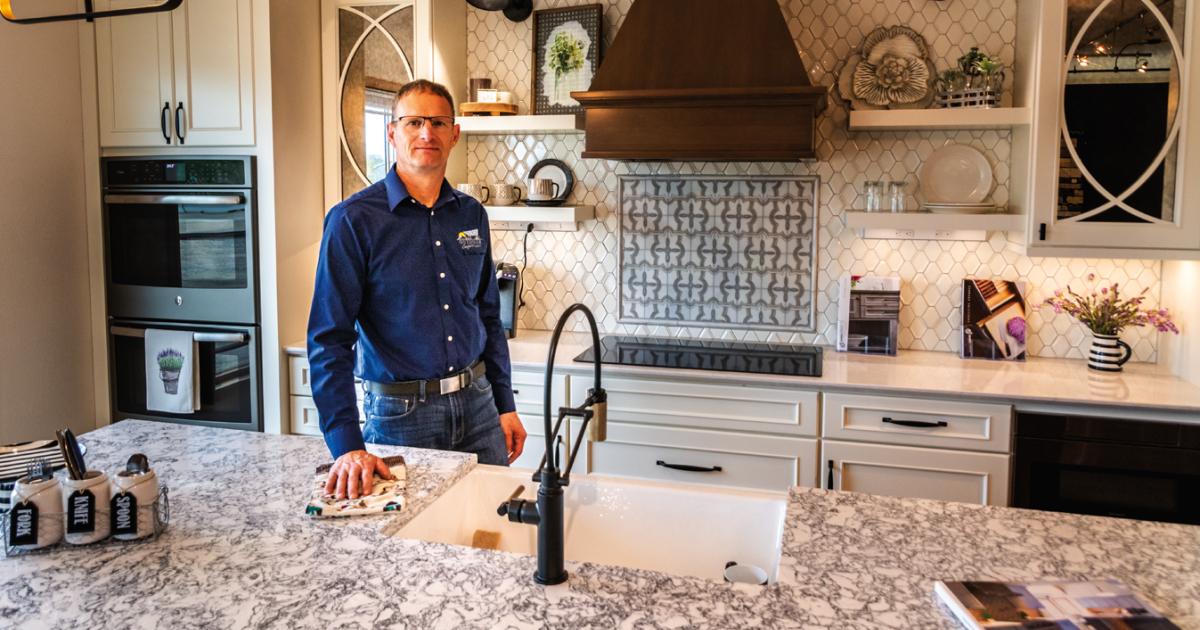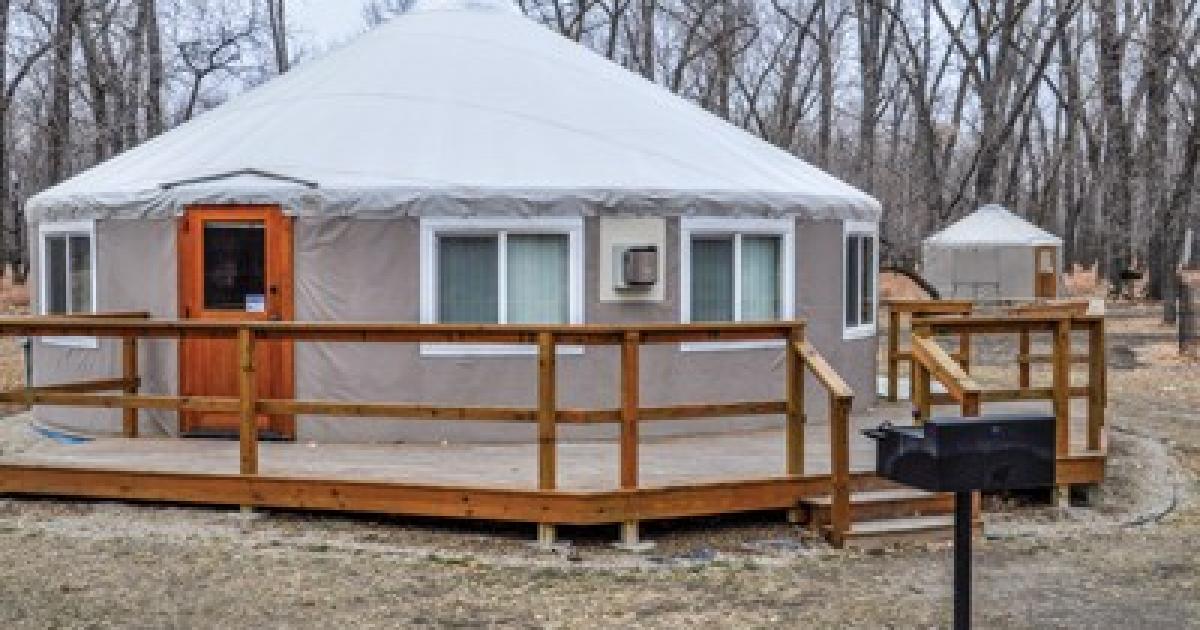From the comfort of your couch, it looks simple, as a home remodeling television show unveils a beautiful bathroom, completely renovated in just half an hour of screen time.
With the popularity of remodeling television shows, a do-it-yourself (DIY) project might sound appealing.
But professionals warn, what looks simple isn’t always the case.
Tim Noteboom, a home inspector for 18 years in the Fargo-Moorhead area, is known as “Mr. Fix It” on KFGO. He answers caller questions on his monthly segment heard on KFGO’s midday program, “It Takes 2 with Amy and JJ.” PHOTOS COURTESY KFGO Radio
‘THE GOOD, THE BAD AND THE UGLY’
“You watch these shows and in half an hour, you can transform your bathroom into this beautiful new bathroom,” says Tim Noteboom, who owned 20/20 Home Inspections for 18 years in the Fargo-Moorhead area. “It’s not like that at all.”
“Some of these projects can become quite complicated and you want to make sure you have the right skill set to complete the project,” advises Dave Lebrun, owner of Souris River Designs in Minot, whose own home is served by Verendrye Electric Cooperative.
Both recently shared the good, the bad and the ugly in remodeling projects.
During his work as a home inspector, Noteboom often discovered major mistakes made by homeowners who had tackled a DIY project.
A home inspection is completed by a professional, non-interested third party who then gives an opinion about the quality and current condition of a used house, Noteboom explains. Home inspectors evaluate everything on the exterior and interior, operate everything within the home and look for structural or mechanical defects on all major components.
Following the two- to- three-hour inspection, the inspector then provides a report to the buyer, who can make an informed decision about his or her home purchase. While Noteboom is retired from home inspections, he’s known as “Mr. Fix It” on KFGO, where he answers caller questions.
“A lot of homeowner mistakes crop up during inspections. You can see where homeowners took on a project and didn’t get it right or neglected to follow procedures. They didn’t get building permits, they didn’t follow building codes, or they didn’t use the proper products for the project,” Noteboom shares.
Building codes exist for a reason, Lebrun points out, and should be followed, even during a DIY project.
Lebrun has owned Souris River Designs for 19 years, offering design, building and remodeling services. Hiring a company to complete a remodel helps a homeowner meet those building codes and offers other advantages, he says. A contractor can more easily schedule all the tradesmen involved, such as electricians, plumbers, painters and floor installers. A company can also schedule all the materials through multiple vendors to arrive when the tradesmen are ready to work.
“We get the project done as soon as possible and make it as painless as possible,” he says. Souris River Designs has affiliation with the National Association of the Remodeling Industry, and is a member of the National Association of Home Builders, the National Kitchen and Bath Association, and the local chamber of commerce.
“I think it’s important, because those organizations all have continuing education opportunities and I’m a big believer in continuing education,” he says. Homeowners should look for those types of affiliations with their contractor, and Lebrun cautions homeowners to hire a contractor licensed in North Dakota and to check references.
HIRING A PROFESSIONAL
If homeowners decide to tackle a DIY project, they should know their limitations, both professionals advise.
Break the project into parts and decide what you honestly believe you’re capable of doing, Noteboom advises. Maybe do the demo yourself, but hire a plumber and electrician. Hire a professional to do the drywall, then finish the painting yourself, he notes.
“A lot of that can be cosmetic as far as how things turn out, but when they start doing plumbing or wiring, then it tends to be a little more complex than just cosmetic,” Noteboom says. “Those are things I leave to professionals.”
Noteboom and Lebrun share projects never to DIY:
1) Electrical. Incorrect wiring can lead to electrocution or fires.
2) Plumbing. “Once it’s in the wall, little leaks and little drips can turn into big problems,” Noteboom says.
3) Taping and texturing. “It looks so simple when you watch somebody do it, but it’s an art form,” Noteboom says.
4) Load-bearing walls. “There’s a lot of risk involved there also, without knowing if it’s a load-bearing wall or not,” Lebrun says.
5) Tiling in wet areas. This is another area where water leakage can lead to bigger problems later.
Lebrun also points to decks failing due to not being anchored to the home properly or not meeting building codes.
Souris River Designs has recently added an outdoor comfort solutions division, helping homeowners better use a deck or patio.
“Most people have decks and patios and the biggest thing we hear from customers is, ‘We can’t ever use it because of the weather, because it’s too cold, too windy or too many bugs,’” he says, so he works with homeowners on adding sunrooms, power screens or retractable awnings to make the space more usable.
He also helps homeowners better use their indoor space.
“We try to steer people to make smart decisions. People’s lives change and as we age, there are things to consider. Are you going to be able to stay in that house as long as you want to?” he says. During a remodeling project, he advises homeowners to consider stairs and accessibility to bathrooms.
HORROR STORIES
Both Noteboom and Lebrun have seen horror stories in home remodels.
Noteboom remembers inspecting a home where a homeowner had completely remodeled the basement, but had made no plans for heating the space.
“There were no plans for heat in the whole basement and it was finished,” he says. Without a permanent heat source, the home’s appraisal was lowered.
Noteboom also found a kiddie pool in an attic to catch rainwater from a leaking roof. With 3,000 to 4,000 home inspections completed, Noteboom says damp basements were probably the No. 1 concern.
Water issues can be solved with good landscaping, gutters and downspouts in good working order and cleaned regularly, and a working sump pump can be critical, he shares.
Lebrun has seen showers without any waterproofing materials behind the tile and load-bearing walls removed without proper planning.
“That can cause severe damage,” he says.
Before getting off the couch and swinging the hammer, weigh the pros and cons, both professionals advise. After all, if you are trying DIY for the satisfaction of a job well-done, can you ensure that the job will be “done well?”
Luann Dart is a freelance writer and editor who lives in the Elgin area.
SELF-CHECK
Consider these questions before starting a project, advises the National Association of the Remodeling Industry:
• Does the homeowner have the expertise needed for the project?
• What about tools? Does the homeowner own the needed tools or will they need to be rented or purchased?
• Does the homeowner have the time needed to start the project and carry it through to completion?
• Will the homeowner require another person’s assistance? If so, does that person have the availability to help?
• Are there any safety risks involved in this project?
• Does the project require knowledge of local building codes?
• Where will the materials needed for the project come from?
• Is the project an attempt to save money? If so, will the homeowner’s time investment outweigh the potential cost for a professional to complete the project?













